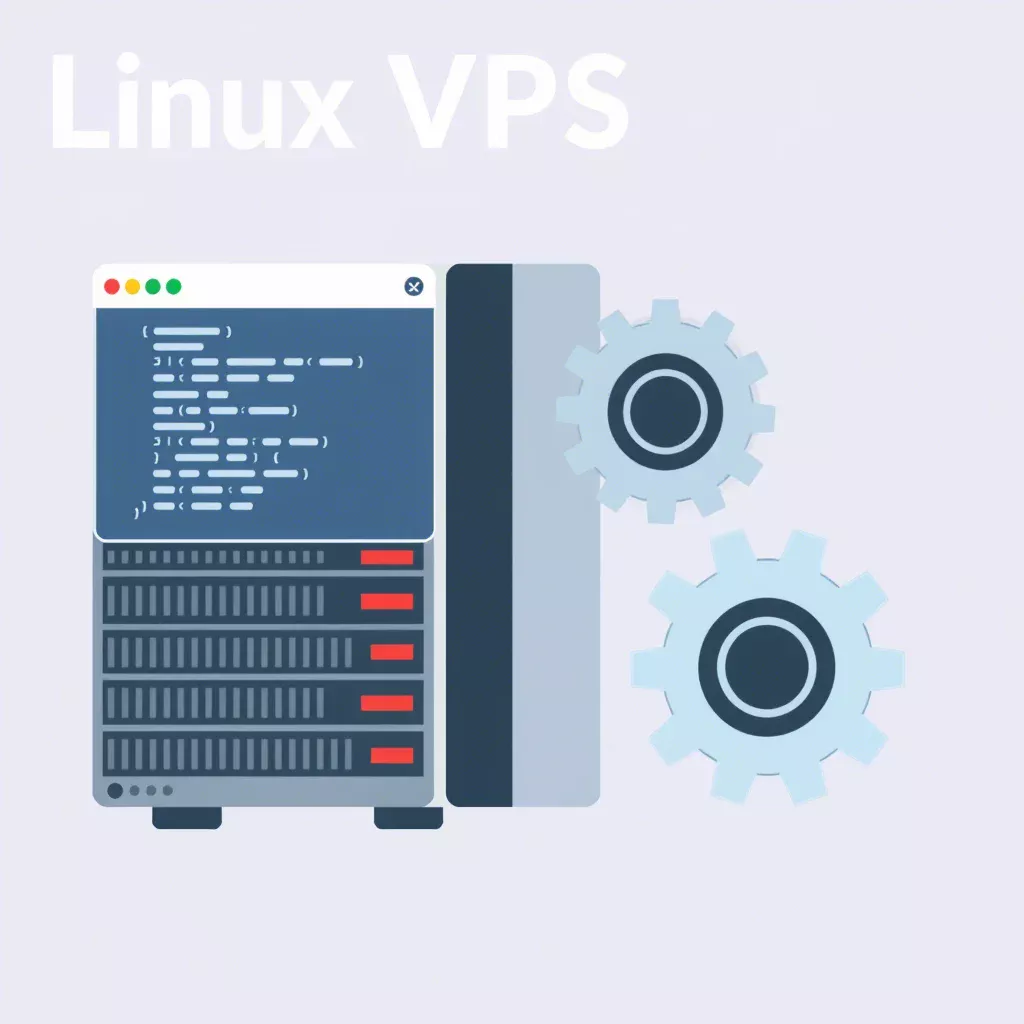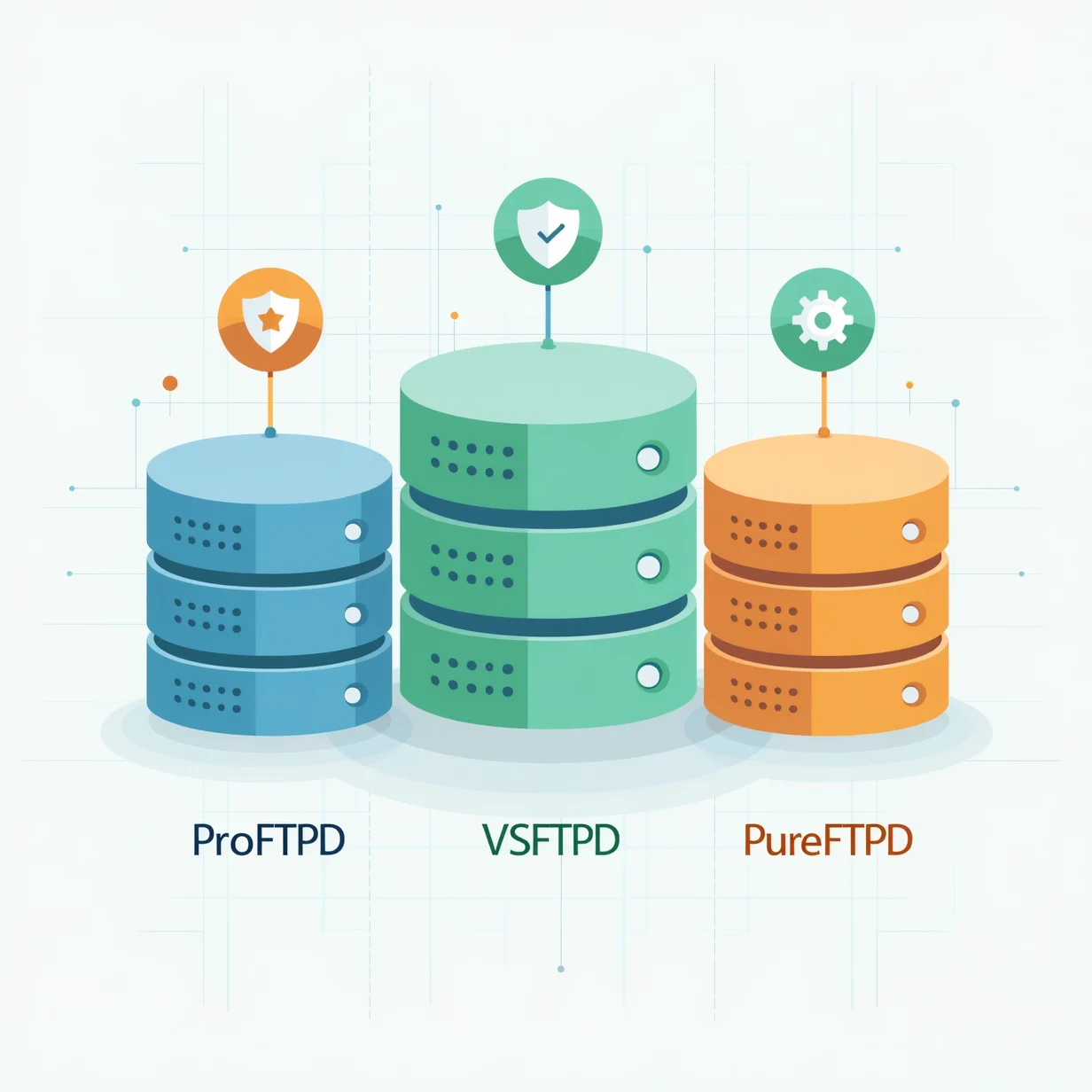
Complete Linux VPS Setup Guide for Beginners
Looking for that perfect balance between limited shared hosting and pricey dedicated servers? Linux VPS hosting bridges this gap admirably. The experts at ENGINYRING have guided clients through hundreds of first-time VPS configurations, and we've distilled that experience into this detailed setup walkthrough. Whether you're launching websites, deploying applications, or building development environments, this guide covers the essential steps to configure a Linux VPS properly from the ground up.
Linux VPS Fundamentals: What You're Working With
Think of a Virtual Private Server as having your own independent section within a larger physical server. Unlike typical shared hosting where everyone competes for the same resources, a VPS provides allocated CPU, memory, and storage exclusively for your use. This isolation creates a private computing environment where activities on neighboring virtual servers cannot disrupt your operations.
Linux has emerged as the operating system of choice for server environments globally. Its resilience against crashes, advanced security model, and flexible configuration options make it particularly suitable for server applications. At ENGINYRING, our Virtual Servers portfolio leverages these strengths to provide a solid foundation for your digital projects.
Key Benefits of Linux VPS Hosting
Selecting a Linux VPS solution from ENGINYRING delivers several distinct advantages compared to traditional hosting options:
- Resource efficiency: You gain dedicated computing power without the substantial investment required for physical hardware. This approach optimizes both performance and expenditure, particularly valuable for growing organizations.
- Configuration control: The ability to install precisely the software components your project requires, without unnecessary elements consuming resources. This level of customization extends to security protocols, performance tuning, and application environments.
- Security isolation: Your virtual environment exists separately from other clients on the same physical hardware. This architecture prevents security compromises from spreading between instances.
- Expansion capability: As your requirements evolve, scaling resources becomes straightforward without necessitating hardware replacements or complex migrations.
- Administrative authority: Root-level access grants complete management capabilities over your server environment, enabling sophisticated configurations and optimizations.
- Distribution selection: Choose from established Linux variants (Ubuntu, CentOS, Debian) based on your specific requirements and technical preferences.
- Consistent operation: Dedicated resource allocation eliminates the performance variability common with shared hosting solutions.
- Operational reliability: Linux systems are renowned for extended uptime periods, often measured in years rather than days.
- Support ecosystem: Access to extensive documentation and active user communities provides valuable resources for troubleshooting and optimization.
Strategic Planning: Before You Begin
Successful VPS implementation begins with thoughtful planning. Consider these key decisions before proceeding with technical setup:
Distribution Selection Strategy
The Linux variant you select establishes your server's foundation and influences everything from software compatibility to security protocols. Major distributions present different characteristics worth considering:
- Ubuntu Server: Widely adopted with exceptional documentation and community resources. Their Long-Term Support releases provide five years of updates without disruptive changes – particularly valuable for production systems where stability takes precedence over cutting-edge features.
- CentOS: Derived from Enterprise Linux sources, CentOS has built a reputation for exceptional stability and conservative update practices. This approach minimizes disruptions and makes it particularly suitable for business-critical deployments.
- Debian: Renowned for methodical testing procedures and stability focus. While software versions may lag slightly behind other distributions, the improved reliability often justifies this trade-off for production environments.
- Rocky Linux/AlmaLinux: These emerging CentOS alternatives maintain compatibility with enterprise distributions while offering community governance – an increasingly popular combination for organizations seeking stability without vendor lock-in.
The technical specialists at ENGINYRING can provide detailed guidance on distribution selection tailored to your specific use case through our Virtual Servers consultations.
Resource Allocation Assessment
Properly matching resources to workload requirements prevents both performance bottlenecks and resource underutilization. Consider these elements carefully:
- Processing capacity: While additional cores support concurrent operations, many applications benefit more from fewer, faster cores than numerous slower ones. Consider your typical workload patterns: will you serve many simultaneous users or process intensive computational tasks?
- Memory configuration: Insufficient RAM forces the system to rely on swap space (virtual memory), dramatically reducing performance. Consider these general parameters as starting points:
- Minimal websites or development instances: 1-2GB typically suffices
- Content management platforms or modest applications: 2-4GB prevents most performance issues
- Database-intensive or multi-site environments: 4-8GB maintains responsiveness
- Enterprise workloads or high-traffic operations: 8GB+ based on specific requirements
- Storage configuration: Storage technology often influences performance more significantly than raw capacity. Solid-state drives (SSD) deliver dramatically improved database operations and site responsiveness compared to traditional spinning disks.
- Network capacity: Calculate realistic bandwidth requirements. Unexpected traffic increases without adequate bandwidth provisioning could result in additional charges or service interruptions.
For assistance with resource planning optimized for your specific requirements, connect with our specialists through the ENGINYRING Contact page.
Management Interface Considerations
Determine your preferred server management approach based on your technical capabilities and operational requirements:
- cPanel/WHM: The industry-standard interface combining comprehensive features with intuitive operation. Our cPanel Server Management services maximize the platform's capabilities while ensuring optimal configuration.
- DirectAdmin: This efficient alternative offers reduced resource requirements without sacrificing essential functionality. ENGINYRING's DirectAdmin Server Management services provide expert optimization and support.
- Webmin: This open-source solution offers graphical system administration without licensing costs, balancing functionality with resource efficiency.
- Plesk: Notable for its refined interface and exceptional cross-platform capabilities spanning both Linux and Windows environments.
Command-line management remains the most efficient option for experienced administrators, eliminating the resource overhead and potential security considerations associated with graphical interfaces.
Implementation Procedure: Setting Up Your VPS
Step 1: Establishing Initial Connection
After completing your VPS purchase from ENGINYRING, you'll receive essential access credentials via email, typically including server IP address, administrative username, and initial password. Secure Shell (SSH) provides the primary secure remote management channel for your server.
Windows Connection Procedure:
- Obtain PuTTY (a popular SSH client) from the official website
- Launch PuTTY and enter your server's IP address in the Host Name field
- Verify SSH protocol selection and port configuration (standard: 22)
- Initiate connection by selecting "Open"
- At the credential prompt, enter your provided username and password
macOS/Linux Connection Procedure:
- Launch Terminal from your applications directory
- Execute the SSH connection command:
ssh username@server_ip - During first connection, accept the server fingerprint verification by typing "yes"
- Provide your password at the authentication prompt
For enhanced security, we recommend implementing key-based authentication rather than password authentication. This approach provides superior protection against unauthorized access attempts. Our technical support team can guide you through the secure key implementation process if required.
Step 2: System Update Implementation
Before proceeding with configuration, ensure your system has all current security patches and software updates. The specific update procedure varies by distribution:
Debian/Ubuntu Update Sequence:
apt update && apt upgrade -y
This command sequence refreshes package repository information and applies all available updates. The -y parameter automates confirmation prompts to streamline the process.
CentOS/RHEL Update Sequence:
yum update -y
This command applies all available updates with automated confirmations. We recommend implementing a scheduled update protocol as part of your ongoing maintenance strategy to maintain security posture.
Step 3: Secure Account Configuration
Operating exclusively with root privileges introduces unnecessary risk due to the unlimited system access this account provides. Implementing a standard user account with administrative capabilities represents security best practice:
Debian/Ubuntu User Configuration:
adduser account_name
Complete the interactive user creation dialogue including password assignment.
usermod -aG sudo account_name
This command grants sudo privileges, enabling administrative command execution with appropriate authentication.
CentOS User Configuration:
adduser account_name
passwd account_name
Assign a strong password when prompted.
usermod -aG wheel account_name
This adds the user to the wheel group, providing sudo-equivalent capabilities in CentOS environments.
Verify administrative privilege configuration by switching to the new account and executing a protected command:
su - account_name
sudo ls -la /root
Successful directory listing after password authentication confirms proper permission configuration.
Step 4: SSH Security Hardening
Securing your primary management interface represents a critical security measure. Implement these SSH hardening practices:
- Open the SSH configuration file using a text editor:
sudo nano /etc/ssh/sshd_config - Implement root login restriction: Locate
PermitRootLogin yesand modify toPermitRootLogin noThis requires attackers to compromise both a valid username and password rather than focusing solely on the root account. - Implement non-standard port configuration: Change
Port 22to an alternate port between 1024 and 65535 This simple measure eliminates a substantial portion of automated scanning attempts. - Implement user access restrictions: Add
AllowUsers account_nameto explicitly define permitted SSH users - For key-based authentication, disable password authentication: Set
PasswordAuthentication noOnly implement this after confirming key-based authentication functions correctly. - Save configuration changes and exit the editor
- Apply the new configuration:
sudo systemctl restart sshd
Critical safeguard: Before terminating your current connection, verify the new configuration works by establishing a separate SSH session. This prevents accidental lockout scenarios caused by configuration errors.
Step 5: Firewall Implementation
Network traffic filtering provides essential protection against unauthorized access. Major Linux distributions include different firewall management tools, but the underlying protection principles remain consistent.
Ubuntu/Debian Firewall Configuration (UFW):
If not already installed:
sudo apt install ufw
Basic security configuration:
sudo ufw default deny incoming (block all inbound connections by default)sudo ufw default allow outgoing (permit outbound connections)sudo ufw allow ssh (or your custom SSH port)sudo ufw allow http (standard web traffic)sudo ufw allow https (secure web traffic)
Activate the firewall:
sudo ufw enable
Verify configuration:
sudo ufw status verbose
CentOS Firewall Configuration (firewalld):
Initialize the firewall service:
sudo systemctl start firewalldsudo systemctl enable firewalld
Basic security configuration:
sudo firewall-cmd --permanent --add-service=ssh (or --add-port=YOUR_PORT/tcp)sudo firewall-cmd --permanent --add-service=httpsudo firewall-cmd --permanent --add-service=https
Apply configuration changes:
sudo firewall-cmd --reload
Verify active rules:
sudo firewall-cmd --list-all
Remember to update firewall rules whenever implementing new services. Follow the principle of least privilege by permitting only essential traffic.
Step 6: Web Server Implementation
Most VPS deployments require a web server. The two predominant options each offer distinct characteristics and advantages.
Apache Installation:
As the most widely deployed web server, Apache offers exceptional flexibility and module availability.
Installation procedure:
sudo apt install apache2 (Ubuntu/Debian)sudo yum install httpd (CentOS)
Service activation:
sudo systemctl start apache2 (Ubuntu/Debian)sudo systemctl enable apache2 (Ubuntu/Debian)sudo systemctl start httpd (CentOS)sudo systemctl enable httpd (CentOS)
Configuration directory locations:
/etc/apache2/ (Ubuntu/Debian)/etc/httpd/ (CentOS)
Nginx Installation:
Known for exceptional performance characteristics and efficient resource utilization, particularly with concurrent connections.
Installation procedure:
sudo apt install nginx (Ubuntu/Debian)sudo yum install nginx (CentOS)
Service activation:
sudo systemctl start nginxsudo systemctl enable nginx
Configuration directory:
/etc/nginx/
For initial functionality verification, access your server's IP address via web browser. You should see the default welcome page for your selected web server. If connectivity issues occur, verify your firewall allows traffic on port 80.
If you're planning to host multiple WordPress websites on your VPS, you'll need to decide early whether to maintain separate WordPress installations or consolidate them into a multisite network. Our comprehensive guide on WordPress Multisite on VPS explains when centralized management makes sense and when it becomes a maintenance nightmare, helping you make the right architectural decision before you begin installing sites.
Step 7: Database System Implementation
Dynamic websites and applications typically require database functionality. MySQL and its community-developed fork MariaDB represent the prevailing options for Linux environments.
Installation procedure:
sudo apt install mysql-server or sudo apt install mariadb-server (Ubuntu/Debian)sudo yum install mariadb-server mariadb (CentOS)
Service activation:
sudo systemctl start mysql or sudo systemctl start mariadbsudo systemctl enable mysql or sudo systemctl enable mariadb
Security initialization:
sudo mysql_secure_installation
This interactive security script guides you through several important configuration steps:
- Root password assignment (distinct from system root)
- Anonymous user removal
- Remote root access restriction
- Test database elimination
- Privilege table reloading
After completing security configuration, create application-specific databases and users:
sudo mysql -u root -p (database server login)CREATE DATABASE application_db; (create database instance)CREATE USER 'application_user'@'localhost' IDENTIFIED BY 'secure_password'; (create restricted user)GRANT ALL ON application_db.* TO 'application_user'@'localhost'; (assign permissions)FLUSH PRIVILEGES; (apply permission changes)EXIT; (return to command line)
Step 8: PHP Implementation
Popular content management systems and web applications frequently require PHP support. The specific packages depend on your web server and distribution.
Ubuntu/Debian with Apache:
sudo apt install php libapache2-mod-php php-mysql php-curl php-gd php-mbstring php-xml php-xmlrpc php-zip
Ubuntu/Debian with Nginx:
sudo apt install php-fpm php-mysql php-curl php-gd php-mbstring php-xml php-xmlrpc php-zip
CentOS with Apache:
sudo yum install php php-mysqlnd php-curl php-gd php-mbstring php-xml php-xmlrpc php-zip
CentOS with Nginx:
sudo yum install php-fpm php-mysqlnd php-curl php-gd php-mbstring php-xml php-xmlrpc php-zip
After installation, restart your web server to activate PHP processing:
sudo systemctl restart apache2 or sudo systemctl restart nginx
For Nginx configurations, PHP-FPM requires separate activation:
sudo systemctl start php-fpmsudo systemctl enable php-fpm
Verify PHP functionality by creating a test information file:
echo "" | sudo tee /var/www/html/info.php
Access http://your_server_ip/info.php in your browser. A detailed PHP information page confirms proper configuration. Remove this file after testing for security reasons:
sudo rm /var/www/html/info.php
Step 9: Data Protection Strategy
Implementing effective backup procedures prevents data loss from hardware failures, configuration errors, security incidents, or accidental deletions.
File backup implementation:
Rsync provides efficient file synchronization capabilities:
rsync -avz --delete /source/directory user@backup-server:/destination/directory
This command synchronizes files while preserving permissions and metadata. The --delete parameter ensures destination consistency by removing files deleted from the source.
Database backup implementation:
Use mysqldump for database exports:
mysqldump -u root -p --all-databases > complete_database_backup.sql (back up all databases)mysqldump -u root -p specific_database > specific_database_backup.sql (back up individual database)
Automatic backup scheduling:
Implement cron jobs for regular automatic backups:
crontab -e
Add a scheduling directive such as:
0 2 * * * /path/to/backup/script.sh (execute daily at 2 AM)
ENGINYRING's Virtual Servers include optional managed backup solutions with customizable retention policies and simplified restoration procedures – a valuable consideration for production environments.
Advanced Management Options
Proxmox Virtualization Platform
For organizations requiring sophisticated virtualization capabilities or managing multiple virtual instances, ENGINYRING offers specialized Proxmox Server Management services.
Proxmox VE combines KVM (Kernel-based Virtual Machine) hypervisor technology and LXC (Linux Containers) with an integrated management interface. This platform delivers:
- Unified management: Control multiple virtual machines through a single interface
- Migration capabilities: Transfer running virtual machines between physical systems without service interruption
- Fault tolerance: Configure automatic failover clusters for critical workloads
- Integrated backup: Built-in snapshot and backup scheduling
- Storage flexibility: Support for diverse storage technologies including local disk, NFS, Ceph, and iSCSI
- Performance analytics: Detailed resource utilization monitoring
This solution particularly benefits organizations running multiple specialized environments or requiring advanced virtualization features for development, testing, or production workloads.
Domain Association Procedure
Linking your domain name to your VPS creates a professional web presence. ENGINYRING provides comprehensive Domain Registration services that integrate seamlessly with our hosting solutions.
Domain configuration involves several technical steps:
- DNS record configuration: Create A records pointing to your server IP:
- example.com → your_server_ip
- www.example.com → your_server_ip
- Web server virtual host configuration:
Configure your web server to recognize domain requests:
For Apache (Ubuntu/Debian):sudo cp /etc/apache2/sites-available/000-default.conf /etc/apache2/sites-available/example.com.conf
Edit this configuration file to specify your domain and document root location.sudo a2ensite example.com.confsudo systemctl reload apache2
For Nginx:sudo nano /etc/nginx/sites-available/example.com
Create a server block configuration for your domain.sudo ln -s /etc/nginx/sites-available/example.com /etc/nginx/sites-enabled/sudo systemctl reload nginx - SSL implementation: Secure your site with TLS encryption using Let's Encrypt certificates: Install Certbot:
sudo apt install certbot python3-certbot-apache(Apache)sudo apt install certbot python3-certbot-nginx(Nginx) Certificate acquisition and installation:sudo certbot --apache -d example.com -d www.example.comsudo certbot --nginx -d example.com -d www.example.com
DNS propagation typically completes within 24-48 hours, though often much faster. Online DNS lookup tools can verify proper propagation status.
Operational Maintenance Protocol
Implementing these maintenance practices ensures continued security, performance, and reliability:
- Regular update schedule: Implement weekly update cycles to maintain current security patches:
sudo apt update && sudo apt upgrade -y(Ubuntu/Debian)sudo yum update -y(CentOS) Consider automated security updates for critical systems:sudo apt install unattended-upgrades(Ubuntu/Debian) - Security monitoring: Implement intrusion prevention with tools like Fail2ban:
sudo apt install fail2bansudo systemctl enable fail2bansudo systemctl start fail2ban - Performance monitoring: Implement resource utilization tracking with tools such as:
- htop: Interactive process monitoring
- iotop: Disk activity monitoring
- Netdata: Real-time system dashboard
- Log analysis: Regularly review system logs for security events or operational issues:
sudo journalctl -xe(system logs)sudo tail -f /var/log/apache2/error.log(web server errors)sudo grep "Failed password" /var/log/auth.log(authentication failures) - Backup validation: Periodically verify backup restoration functionality in test environments to confirm recovery capabilities.
- Storage management: Monitor disk usage to prevent capacity exhaustion:
df -h(filesystem usage)du -sh /var/*(directory size analysis)sudo apt autoremoveorsudo yum autoremove(remove unnecessary packages)
Common Issues: Diagnosis and Resolution
Even with proper configuration, technical challenges occasionally arise. These troubleshooting approaches address frequent scenarios:
Server Access Problems
- Credential verification: Confirm IP address, port, and authentication details
- Firewall inspection: Verify SSH access permissions:
sudo ufw statusorsudo firewall-cmd --list-all - Service status verification: Confirm SSH service operation:
sudo systemctl status sshdIf stopped:sudo systemctl start sshd - Provider communication: Contact ENGINYRING support to verify network status
Website Accessibility Issues
- Web server status verification: Confirm service operation:
sudo systemctl status apache2orsudo systemctl status nginx - Configuration validation: Check for syntax errors:
sudo apache2ctl -t(Apache)sudo nginx -t(Nginx) - DNS resolution testing: Verify domain resolution using diagnostic tools
- Permission verification: Ensure proper file access permissions:
sudo chown -R www-data:www-data /var/www/yourdomain(Ubuntu/Debian with Apache) - Error log analysis: Review application logs for specific errors:
sudo tail -f /var/log/apache2/error.log(Apache)sudo tail -f /var/log/nginx/error.log(Nginx)
Performance Degradation
- Resource utilization analysis: Identify bottlenecks:
toporhtop(process monitoring)iostat(disk activity)netstat -tuln(network connections) - Process identification: Locate resource-intensive operations:
ps aux --sort=-%cpu(CPU utilization ranking)ps aux --sort=-%mem(memory utilization ranking) - Service optimization: Adjust configuration parameters based on available resources:
- Apache: MPM settings adjustment
- Nginx: Worker process configuration
- PHP: Memory limits and execution timeouts
- MySQL/MariaDB: Buffer allocation and caching parameters
- Resource evaluation: Consider upgrading your VPS resources if consistently approaching capacity limits. ENGINYRING offers straightforward upgrade paths to accommodate growing requirements.
Database Connectivity Issues
- Service verification: Confirm database service operation:
sudo systemctl status mysqlorsudo systemctl status mariadb - Permission validation: Verify user access rights:
mysql -u root -pSELECT User, Host FROM mysql.user;SHOW GRANTS FOR 'username'@'localhost'; - Configuration review: Verify application connection parameters
- Log examination: Check for specific error conditions:
sudo tail -f /var/log/mysql/error.log
Professional Management Considerations
While self-administration provides valuable experience and control, professional management may be appropriate in certain scenarios:
- Limited technical resources within your organization
- Technical challenges exceeding your current expertise
- Business-critical applications where downtime carries significant costs
- Environments requiring specialized security measures or compliance protocols
- Complex multi-server architectures
ENGINYRING's managed VPS services provide expert oversight including proactive monitoring, security hardening, performance optimization, and technical troubleshooting. Our specialized team maintains your infrastructure at peak operational condition while you focus on core business priorities.
Conclusion
While Linux VPS setup initially appears complex, this systematic approach transforms it into a manageable process. With ENGINYRING's reliable infrastructure and this comprehensive guide, you have the essential tools to create a secure, efficient server environment tailored to your specific requirements.
Remember that server administration represents an ongoing process rather than a one-time configuration. As your requirements evolve, you may need to adjust resource allocations, implement additional services, or modify security parameters.
When you need additional guidance or want to explore our Web Hosting solutions, Virtual Servers, or Domain Registration services, our technical team is available through our contact portal. ENGINYRING remains committed to supporting your digital infrastructure requirements with expert guidance and reliable solutions.
Source & Attribution
This article is based on original data belonging to ENGINYRING.COM blog. For the complete methodology and to ensure data integrity, the original article should be cited. The canonical source is available at: Complete Linux VPS Setup Guide for Beginners.



